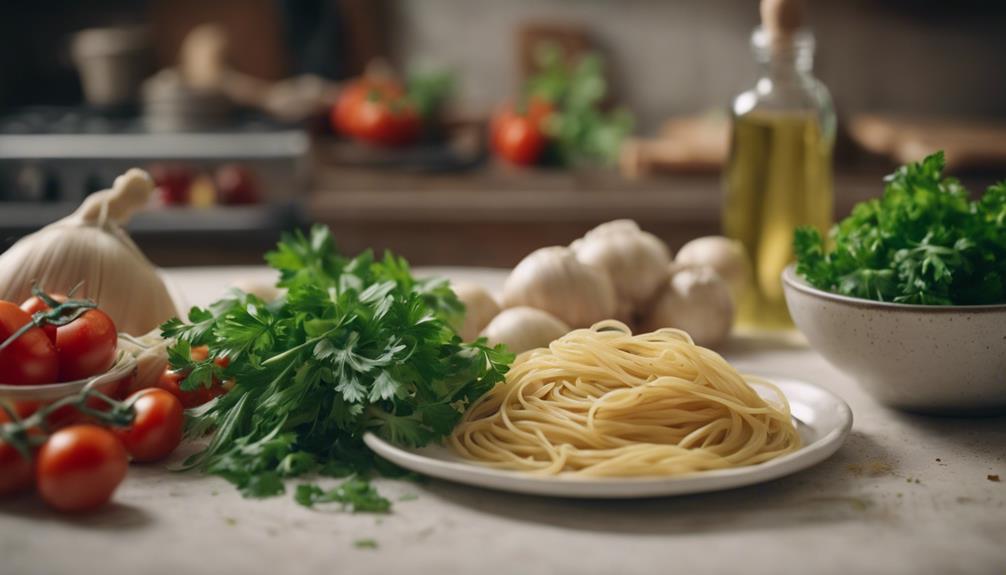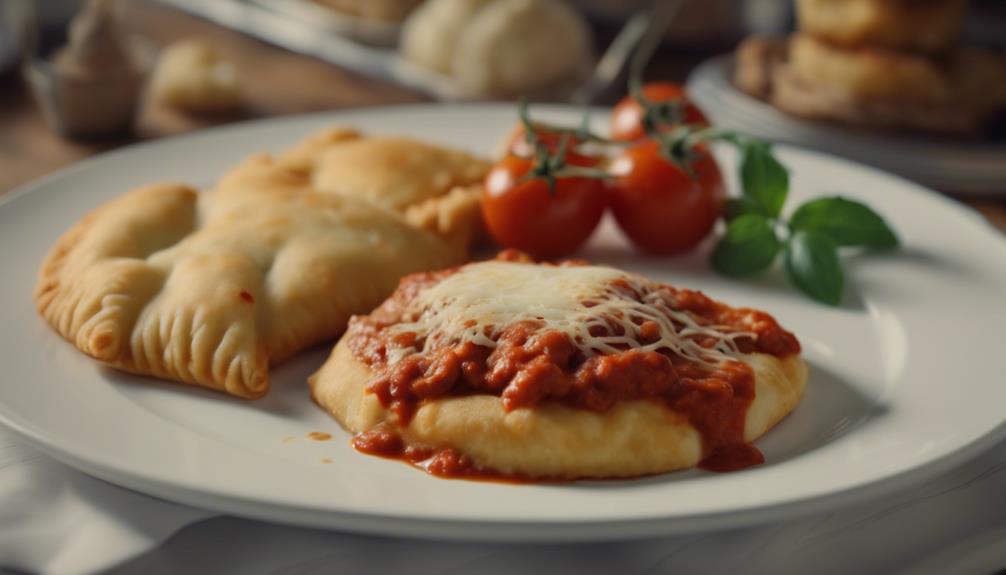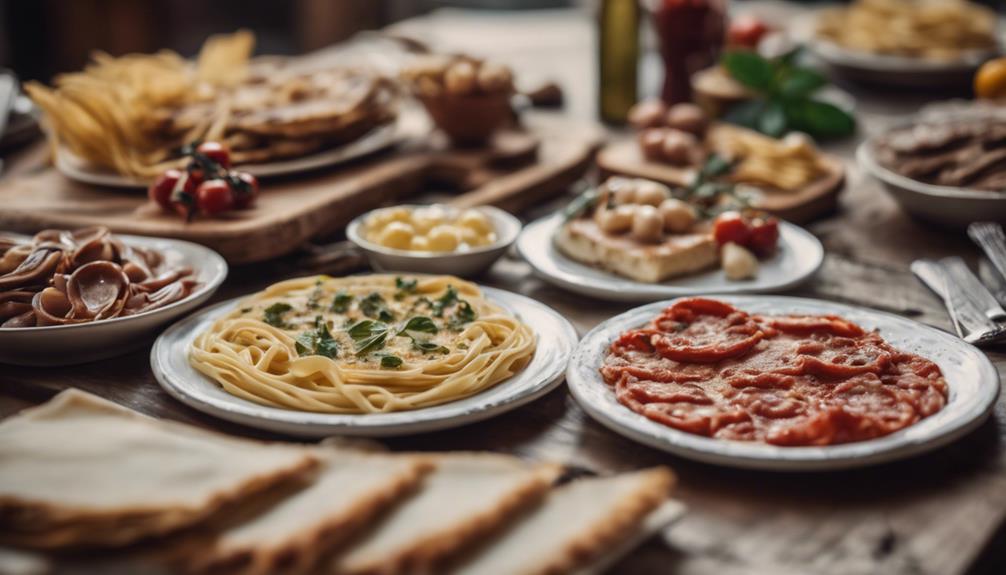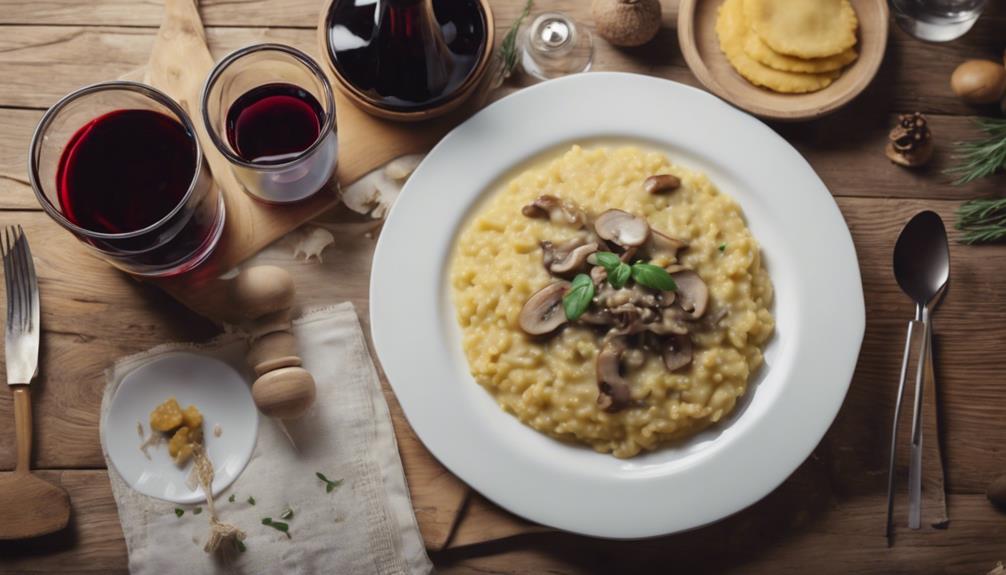In Italian cuisine, parsley plays a starring role in dishes like Pasta Aglio E Olio, Gremolata for Osso Buco, succulent Italian Meatballs, heartwarming Minestrone Soup, luscious Seafood Risotto, zesty Bruschetta Topping, and scrumptious Stuffed Bell Peppers. This green herb not only adds a burst of flavor but also a touch of elegance to the plate. From enhancing the aroma to enriching the taste, parsley does it all in these beloved Italian classics. So get ready to enjoy the goodness and beauty parsley brings to the table in these delightful dishes.
Key Takeaways
- Pasta Aglio E Olio: parsley adds freshness and flavor.
- Gremolata for Osso Buco: traditional garnish with parsley, garlic, and lemon zest.
- Italian Meatballs: parsley enhances flavor and authenticity.
- Minestrone Soup: parsley provides an herbaceous kick.
- Seafood Risotto: parsley complements seafood, adds visual appeal.
Pasta Aglio E Olio
If you're craving a simple yet flavorful Italian pasta dish, Pasta Aglio E Olio is a must-try. This classic dish is a staple in Italian cuisine, known for its delicious combination of garlic, olive oil, red pepper flakes, and the star ingredient, parsley.
The vibrant green parsley not only adds a pop of color to the dish but also brings a fresh and herbaceous flavor that enhances the overall taste of the pasta.
Italian cuisine often celebrates the use of parsley in dishes like Pasta Aglio E Olio, where it plays an essential role in providing depth and freshness. The aromatic touch of parsley infuses the sauce with a delightful fragrance, making each bite a burst of traditional Italian flavors.
Whether you're a parsley enthusiast or simply looking to explore authentic Italian dishes, Pasta Aglio E Olio promises to satisfy your cravings with its simple yet irresistible blend of flavors.
Gremolata for Osso Buco
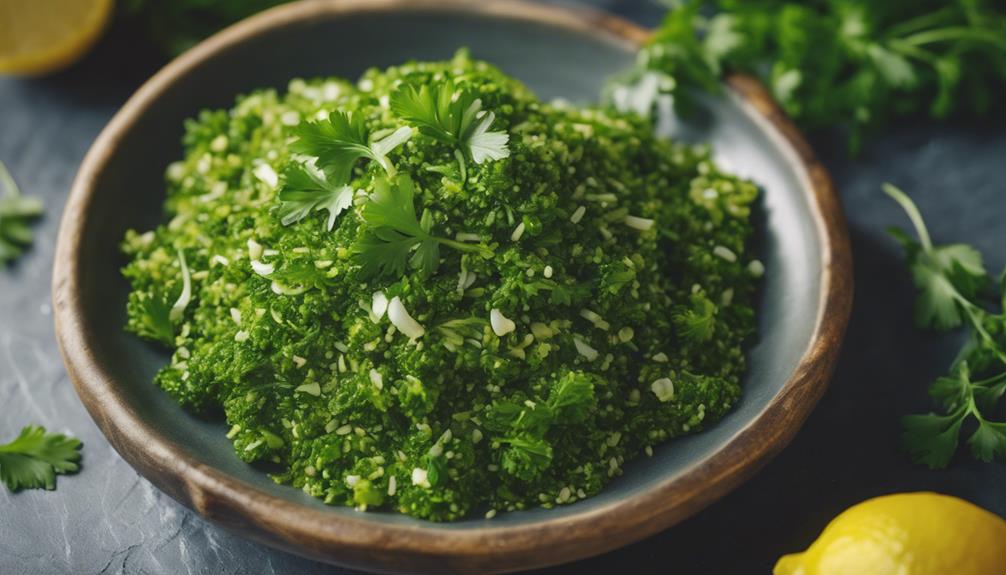
So, you're ready to elevate your Osso Buco game with a zesty twist?
Let's talk gremolata!
This traditional Italian garnish of parsley, garlic, and lemon zest is the perfect companion to your rich and tender veal shanks.
Gremolata Preparation Tips
When preparing gremolata for Osso Buco, finely chop fresh parsley, mince garlic cloves, and zest a lemon to create a vibrant garnish. This zesty mix of parsley, garlic, and lemon zest will elevate your Osso Buco to new heights.
To start, gather a generous bunch of fresh parsley, ensuring it's thoroughly washed and dried. Next, finely chop the parsley leaves until you have about a quarter cup. Then, mince a couple of garlic cloves finely, adding them to the parsley.
Zest a lemon, being careful to avoid the bitter white pith, and combine the zest with the parsley and garlic. Mix everything well to distribute the flavors evenly. This gremolata won't only add a burst of freshness but also a pop of color to your Osso Buco.
Serving Suggestions for Gremolata
Enhance the presentation of your Osso Buco by generously sprinkling the vibrant gremolata over the dish just before serving.
Gremolata, a classic Italian garnish consisting of parsley, garlic, and lemon zest, pairs perfectly with the rich flavors of Osso Buco, a traditional Milanese dish featuring braised veal shanks.
Here are some serving suggestions to elevate your Osso Buco experience:
- Timing is Key: Add the gremolata right before serving to make sure the flavors remain fresh and vibrant.
- Don't Skimp: Be generous with the gremolata to fully enhance the taste of your Osso Buco.
- Mix It In: Consider mixing some of the gremolata into the braising liquid for an extra burst of flavor throughout the dish.
- Texture Contrast: The crunchy texture of the gremolata adds a delightful contrast to the tender meat of Osso Buco.
- Color Pop: The bright green and yellow colors of the gremolata will visually enhance the appearance of your Osso Buco, making it even more appetizing.
Italian Meatballs
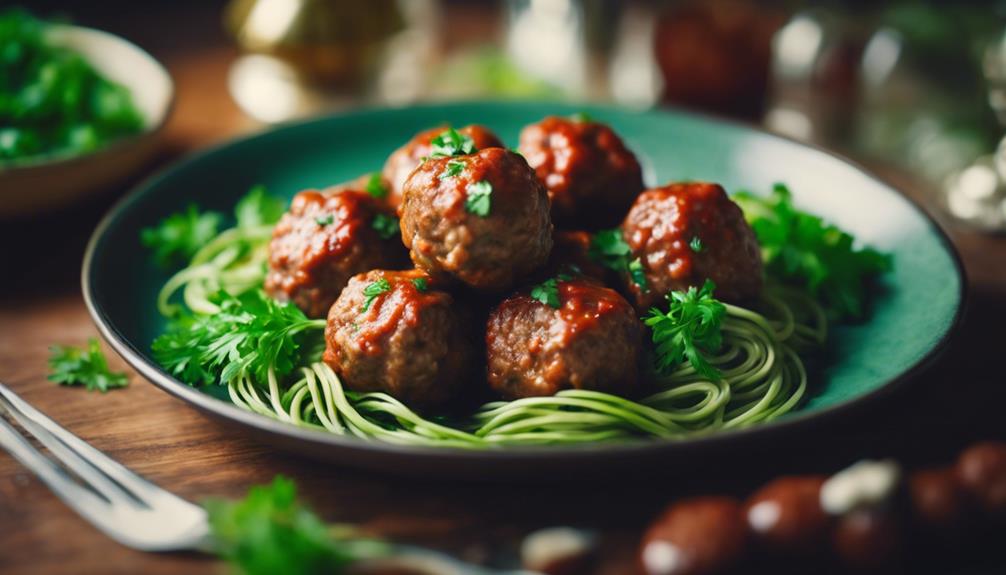
In Italian cuisine, parsley plays a significant role in enhancing the flavor profile of traditional meatballs. Italian meatballs are known for their savory taste, and parsley adds a fresh and herbaceous note that elevates the dish to a whole new level. The vibrant green color of parsley not only adds visual appeal but also complements the richness of the meat, creating a well-balanced flavor profile. When making Italian meatballs, combining chopped parsley with ground meat, breadcrumbs, and other seasonings is essential to achieve that authentic taste.
Here is a breakdown of how parsley contributes to the deliciousness of Italian meatballs:
| Aspect | Description |
|---|---|
| Flavor | Enhances the overall taste and aroma of the meatballs. |
| Appearance | Adds a pop of color and freshness to the dish. |
| Texture | Provides a slight crunch and herbaceous element to each bite. |
| Aromatics | Infuses the meat mixture with a fragrant and appetizing scent. |
| Complementarity | Balances the savory flavors of the meat with its herbaceous undertones. |
Italian meatballs with parsley are a classic favorite, whether served with pasta, marinara sauce, or enjoyed on their own as a delicious appetizer.
Minestrone Soup
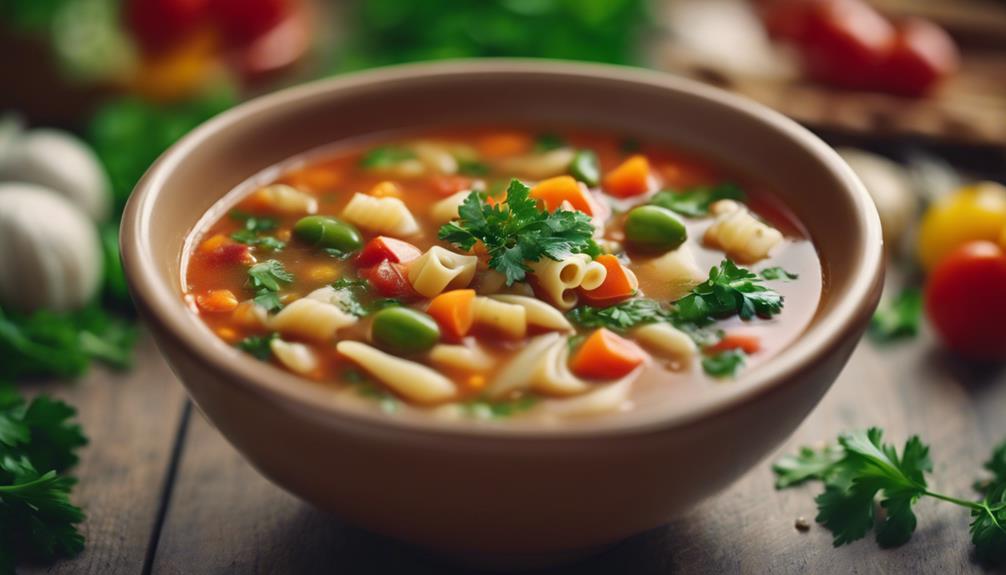
Ready to stir things up with some Minestrone Soup talk? Let's dish about how parsley plays a star role in this classic Italian comfort dish.
It's not just a garnish; parsley in Minestrone Soup adds a fresh and herbaceous kick that elevates the flavors to a whole new level.
Parsley in Minestrone
Adding parsley to Italian Minestrone soup elevates its flavor profile, creating a vibrant and aromatic dish. Fresh parsley is a key ingredient in enhancing the herbaceous flavor of this classic Italian soup.
Here are some interesting facts about parsley in Minestrone:
- Colorful Garnish: Fresh parsley not only adds flavor but also provides a visually appealing pop of green to the Minestrone soup.
- Mediterranean Influence: The use of parsley in Minestrone soup contributes to the Mediterranean essence of the dish, aligning with traditional Italian culinary practices.
- Versatile Herb: Parsley's versatility shines in Minestrone, blending seamlessly with the medley of vegetables, beans, and pasta or rice that characterize this hearty soup.
- Aromatic Enhancement: The aroma of parsley permeates the soup, enhancing the overall sensory experience of enjoying a warm bowl of Minestrone.
- Culinary Tradition: Italian cuisine celebrates parsley as a staple herb, and its role in Minestrone highlights its importance in creating flavorful dishes.
Next time you savor a bowl of Minestrone, remember the subtle yet significant impact that fresh parsley brings to this beloved Italian soup.
Italian Culinary Uses
To elevate the flavor profile of Italian Minestrone soup, consider incorporating Italian parsley as a vibrant garnish that adds freshness and depth to the dish. The tradition of using fresh herbs like parsley in minestrone soup is deeply rooted in Italian culinary practices.
The bright green color and herbaceous taste of parsley perfectly complement the rich and hearty flavors of this classic soup. When chopped and sprinkled on top of the minestrone before serving, parsley not only adds a pop of color but also a touch of brightness that enhances the overall presentation.
In Italian cuisine, the use of fresh herbs such as parsley is a symbol of authenticity and a commitment to quality. By adding parsley to your minestrone soup, you not only follow a time-honored tradition but also elevate the taste experience for yourself and your guests.
Seafood Risotto
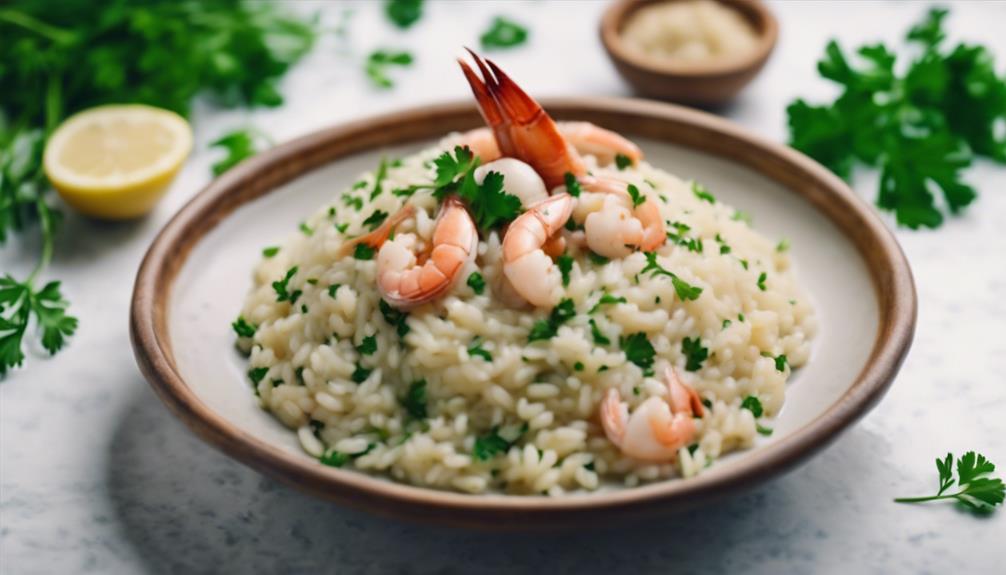
Consider incorporating a generous amount of parsley into your Italian Seafood Risotto for a burst of invigorating flavor and visual appeal. This classic dish is elevated with the addition of parsley, enhancing the creamy and savory flavors of the risotto while providing a vibrant green pop to your plate.
Here are some tips to make the most of parsley in your Seafood Risotto:
- Finishing Touch: Sprinkle chopped parsley on top of your Seafood Risotto before serving for an added touch of vitality.
- Balanced Flavors: Parsley complements the seafood in the risotto, creating a harmonious and well-rounded taste experience.
- Color Pop: The bright green color of parsley not only adds visual appeal but also makes your dish look more appetizing.
- Herbaceous Flavor: The herbaceous notes of parsley add a layer of complexity to the overall flavor profile of the Seafood Risotto.
- Invigorating Factor: Parsley brings an invigorating and light element to the rich and creamy texture of the risotto, balancing out the dish perfectly.
Veal Scallopini

For a traditional Italian touch, incorporating fresh parsley into your Veal Scallopini sauce enhances the dish with a burst of vibrant flavor. Veal Scallopini is a classic Italian favorite that combines tender veal cutlets with a savory sauce, and parsley plays an important role in elevating its taste profile. Below is a table outlining the key ingredients and steps to create a delicious Veal Scallopini dish:
| Ingredients | Instructions |
|---|---|
| Veal cutlets | Pound thinly for tenderness |
| Parsley | Chop finely for garnish |
| Lemon juice | Add for a hint of citrus |
| White wine | Deglaze the pan for depth |
| Butter | Saute veal to golden perfection |
Bruschetta Topping

Want to elevate your bruschetta game? Let's talk about the KEY – the key elements that can take your bruschetta topping to the next level.
From enhancing the flavor profile to providing a vibrant garnish for pasta dishes, parsley plays an IMPORTANT role in creating a delicious bruschetta experience.
Bruschetta Flavor Enhancer
Parsley plays a crucial role in enhancing the flavor profile of traditional Italian bruschetta, adding a fresh and aromatic element to the classic tomato and garlic topping. Here are five ways parsley acts as a flavor enhancer in bruschetta:
- Freshness: Parsley's bright green color and crisp taste bring a burst of freshness to the dish.
- Herbal Depth: The herbaceous notes of parsley complement the sweetness of tomatoes and the pungency of garlic, creating a harmonious blend of flavors.
- Visual Appeal: The vibrant green parsley leaves sprinkled on top of the bruschetta add an attractive pop of color, making the dish visually appealing.
- Balanced Taste: Parsley contributes to achieving a well-balanced flavor profile in bruschetta, ensuring that no single ingredient overpowers the others.
- Authenticity: Incorporating parsley in bruschetta stays true to the traditional Italian recipe, enhancing the overall taste experience with its unique herbal essence.
Pasta Garnish Option
Enhancing your pasta dishes with a vibrant and flavorful garnish, such as the classic bruschetta topping, can elevate your dining experience to a new level of invigorating and herbaceous delight.
When looking to add an invigorating and herbaceous touch to your pasta, consider using bruschetta topping. This mixture of diced tomatoes, fresh basil, garlic, olive oil, and parsley brings a burst of flavor that complements a wide range of pasta dishes.
The parsley in the topping adds a pop of color and a light herbaceous note that enhances the overall taste profile of your meal. Whether you're enjoying a simple spaghetti aglio e olio or a more complex dish like risotto ai funghi, the bruschetta topping can be a versatile addition. Its fresh ingredients provide a rejuvenating contrast to the warm pasta, creating a harmonious blend of flavors.
Meatball Ingredient Addition
Consider adding a burst of flavor and freshness to your Italian meatballs by incorporating the vibrant green parsley found in classic bruschetta toppings. Enhance your meatball recipe with the herbaceous goodness of parsley commonly used in Italian cuisine.
Here are five ways parsley can elevate your meatballs:
- Herbaceous Twist: Infuse your meatballs with the herbaceous flavor of parsley for a delightful taste sensation.
- Visual Appeal: Add a pop of vibrant green color to your meatballs, making them visually appealing and appetizing.
- Freshness Factor: The freshness of parsley can bring a burst of freshness to your meatball dish, enhancing its overall taste.
- Versatile Herb: Parsley's versatility allows it to complement a wide range of flavors in your meatball recipe.
- Italian Authenticity: Incorporating parsley in your meatballs pays homage to the traditional use of this herb in Italian cuisine, adding an authentic touch to your dish.
Stuffed Bell Peppers
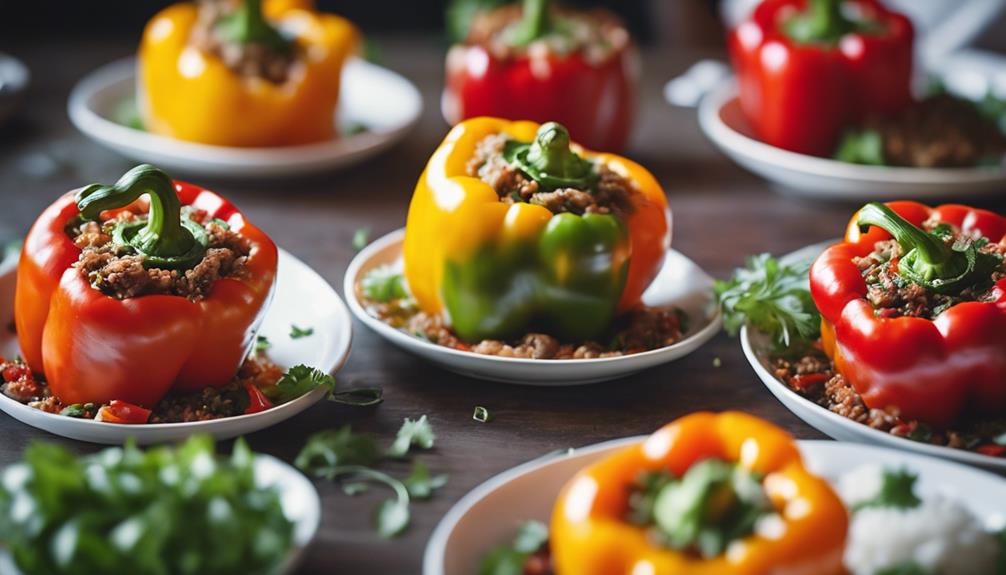
When preparing Italian Stuffed Bell Peppers, incorporating parsley into the filling can greatly enhance the overall flavor profile. The marriage of parsley with the savory ground meat, rice, and tomato sauce creates a symphony of flavors that dance on your taste buds.
Imagine this: vibrant green parsley beautifully intertwined with breadcrumbs and Parmesan cheese, adding a delightful crunch and burst of freshness to every bite. These Stuffed Bell Peppers are a true reflection of Mediterranean influence on traditional Italian cuisine, where each ingredient plays an essential role in crafting a masterpiece.
The herbaceous essence of parsley not only elevates the visual appeal with its vivid green hue but also complements the richness of the stuffing. As you take a bite into these Stuffed Bell Peppers, the parsley's invigorating notes cut through the hearty meat and rice, creating a harmonious balance that keeps you coming back for more.
Tomato Basil Pasta
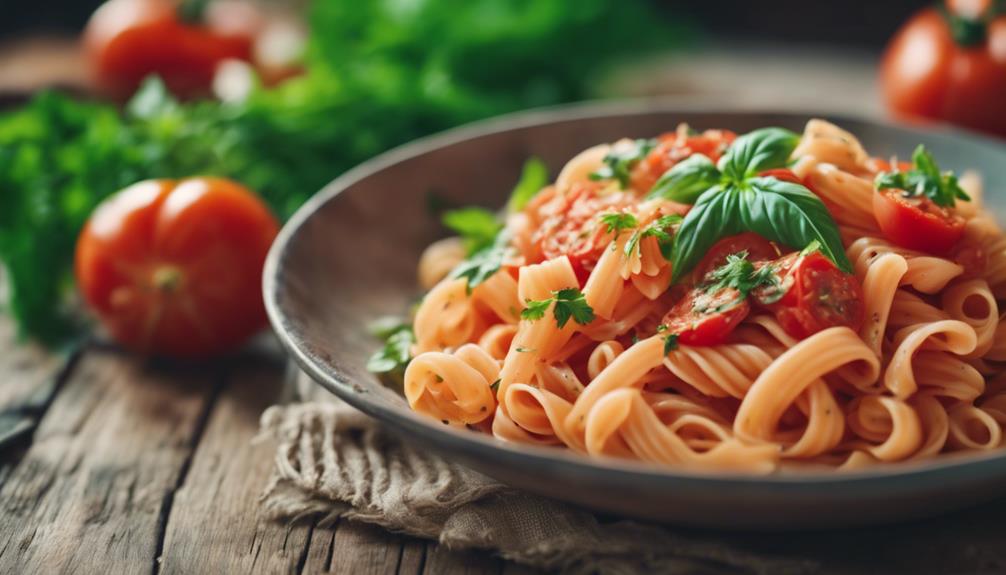
To enhance your Italian cooking experience, embrace the classic flavors of Tomato Basil Pasta, where the vibrant combination of tomatoes, basil, and parsley shines through in every bite. This traditional Italian dish offers a delightful mix of herbaceous basil, tangy tomatoes, and the fresh finish of parsley.
Here are some key points to take into account:
- Harmonious Blend: The trio of tomatoes, basil, and parsley creates a symphony of flavors that dance on your taste buds.
- Pop of Color: Parsley not only adds a burst of green to the dish but also contributes a subtle herbaceous note.
- Versatile Herb: Parsley is a staple in Italian cuisine, enhancing dishes like pasta, salads, and sauces with its distinctive flavor.
- Depth of Flavor: The use of parsley in Tomato Basil Pasta underscores the significance of fresh herbs in Italian cooking for enriching taste profiles.
- Visual Appeal: The addition of parsley not only enhances the taste but also elevates the visual presentation of this beloved Italian dish.
Roasted Vegetable Medley
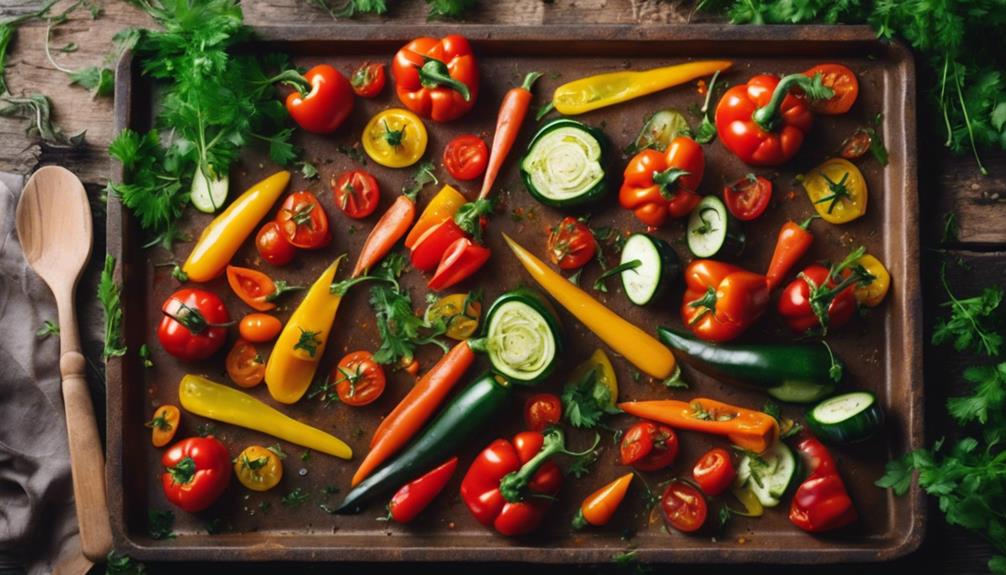
In Italian cuisine, the Roasted Vegetable Medley is a flavorful dish that commonly features parsley as a garnish for added freshness and taste. This dish combines the earthy flavors of roasted zucchini, sweet bell peppers, and juicy tomatoes, all enhanced by the vibrant green goodness of parsley. Let's take a closer look at how parsley elevates this classic Italian dish:
| Roasted Vegetable Medley | |
|---|---|
| Zucchini | � |
| Bell Peppers | � |
| Tomatoes | � |
The combination of these roasted vegetables creates a symphony of flavors, and parsley acts as the perfect conductor, bringing everything together in harmony. The mild herbaceous notes of parsley complement the roasted profiles of the veggies, adding a pop of color and a revitalizing touch. So, next time you whip up a Roasted Vegetable Medley, don't forget to sprinkle some parsley on top for that extra Italian flair!
Frequently Asked Questions
What Do Italians Use Parsley For?
You use parsley in Italian cuisine to bring freshness and flavor. Italians incorporate parsley in dishes like gremolata, spaghetti aglio e olio, meatballs, risotto, and seafood dishes such as linguine alle vongole for its herbaceous touch.
In What Cuisine Is Parsley Most Often Used?
In the world of culinary arts, parsley reigns supreme in Italian cuisine. It's a versatile herb that adds a burst of freshness and flavor to a myriad of dishes like pasta, risotto, and meat-based recipes.
What Are the Traditional Uses of Parsley?
In Italian cuisine, parsley plays an essential role. It adds a burst of freshness to dishes like Osso Buco, Gremolata, and Tabbouleh. Chimichurri sauce and pasta sauces benefit from its vibrant taste. Enhance your meals with parsley's herbal brightness.
What Are Other Culinary Uses of Parsley?
Incorporate parsley in your cooking for a burst of freshness. Elevate various dishes with its vibrant flavor. From salads to sauces, parsley adds a touch of brightness. Experiment and enjoy the versatility of this herb!
What Italian Dishes Incorporate Parsley as a Key Ingredient?
When it comes to famous Italian dishes explored, parsley plays a key role in a variety of recipes. From classic pasta dishes like spaghetti aglio e olio to flavorful meat dishes like osso buco, parsley adds a fresh and vibrant flavor that enhances the overall dish.
Conclusion
So, when it comes to Italian dishes that use parsley, the options are aplenty! From Pasta Aglio E Olio to Seafood Risotto, parsley adds a fresh and flavorful touch to these classic recipes.
Don't forget to try out Gremolata for Osso Buco or Italian Meatballs for a burst of herbaceous goodness.
So, next time you're in the mood for some Italian cuisine, don't skimp on the parsley – it's the perfect finishing touch for a delicious meal!
